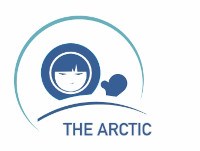Hydroelectricity is created by capturing rushing water and using it to drive large turbines to generate power. Hydroelectric stations require rivers to be dammed or diverted to harness the force of rushing water at its apex.
Circumpolar water-powered megaprojects have been built especially in Norway, Labrador and Iceland. Some cross-national projects have also been launched the Norwegian, former Soviet, and Finnish agreement on the Pasvik River being an example of such a cooperation.
Hydroelectric dams alter river systems, often depleting fish stocks and disrupting navigational routes creating socioeconomic and environmental impacts at micro level.
The impact of hydro power in both environmental and socioeconomic terms is though most strongly felt at local level as can be seen from the examples in Alta-Kautokeino project in Norway or La Grande project in James Bay in Canada show. In both cases the utilization of land belonging traditionally to indigenous people triggered massive protests with multiple outcomes.
Another example is the Kárahnjúkar project in Iceland where the creation of lagoons to collect the water had effects on the environment and led to huge protests.
Comprehensive socioeconomic and environmental impact assessments with regard to indigenous / local populations and a sustainable use beyond sheer cost-benefit calculations have thus become growingly accepted as necessity for any hydro-project.









